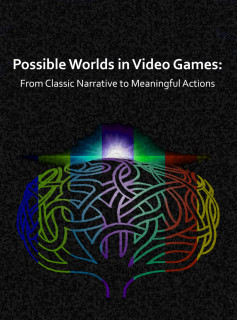Possible Worlds in Video Games
From Classic Narrative to Meaningful Actions

Video games are one of the most important cultural and leisure industries in the world. Far from being mere children’s toys, current digital games resemble film and literature in their ability to evoke complex and immersive fictional worlds. In this sense, video games have evolved into cultural objects capable of eliciting rich and vast fictional worlds through ludic experiences. In this regard, contemporary video games should be read more like playable worlds than as interactive stories. Thus, fictional worlds of the traditional media are transformed into ludofictional worlds, spaces rich in characters and emotions that are especially affected by the intervention of a player. We propose a theoretical-practical model called Theory of Ludofictional Worlds, inspired by the Semantics of Fiction and Possible Worlds, and which is oriented to the analysis of video games as integrated systems. The first part of the book proposes a brief journey from philosophy to narratology in which the central notions at stake are analyzed: possible world, mimesis, fiction, and narration. This part becomes essential to establish the theoretical coordinates in which the videogame moves as a contemporary cultural and audiovisual object. The second part focuses on games as game worlds. In this sense, and taking into account the context of digital culture and interdisciplinary readings, ludofictional worlds are examined through three different perspectives. In the first place, the static macrostructural dimension accounts for the game as a formal system of possible worlds, that is, it exposes the different game options proposed by the designer to the user. Secondly, the dynamic microstructural dimension analyzes what relationships exist between possible actions, characters and psychological motivations. And, finally, the metaleptic dimension focuses on the main mechanisms (interface, physical game controls, haptic systems) that allow the player to overcome the boundaries of fiction to intervene inside. The third and last part propose the commented analysis of a sample of titles. From games as significant as “Portal 2” or “Alan Wake”, this book analyzes how these worlds are created, from their structure to the design of characters, without forgetting the relevance of actions or the emergence of emotions to show the complexity and limits of the design of contemporary videogames.
